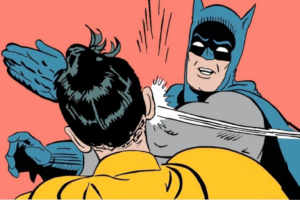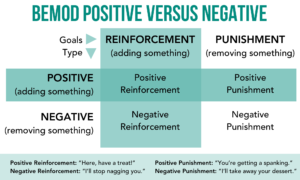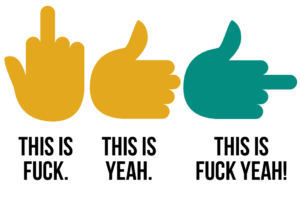How do you communicate best? How do you receive communication best? And does it even matter?
I think so.
A while back, I decided to research communication styles in the Google. A quick search brought up a lot of articles, but all were about the four basic communication styles: passive, aggressive, passive-aggressive and assertive, or about variations on that theme.
And I’m a master of Google Fu. I have found important stuff by typing the most bizarre things into Google. Like “book about Arthur legend in space,” because I remembered a series I read when I was 14 or 15 that I wanted to find again (The Keltiad for those interested.)
But this time, I was not finding the right words to input. That was not what I was looking for.
So I set it aside.
Then I saw this screenshot series going around by @butchanarchy on twitter, that said:
Tbh the people I’ve known who have been the most rigidly committed to the idea that all hard or important conversations must happen in-person have also been people for whom in-person conversations give them the greatest advantage.
I know that it’s a pretty common position that you’re ethically required to have hard conversations in-person/on the phone rather than in writing but I wonder if anyone who believes that has taken a moment to consider which people that position tends to privilege.
Speaking for myself: I’m autistic. I can have hard conversations in-person, but the only way I can do even that (and hold my boundaries in it rather than just submit to the other person) is if I have a lot of prep time. Otherwise I just get walked all over.
Writing, on the other hand, allows me to really reflect on how I feel and what I want to say. It allows me to have valuable processing time with what the other person says, without the pressure and speed of in-person conflict, which I need to come to a truly genuine response.
There is not an insignificant number of folks who are very socially skilled and good at manipulation who demand all communication be on their terms because they are well aware that their terms make it easier for them to control the conversation and its outcome.
Not saying that all people who prefer hard/important conversations to be in-person are like this. All I’m saying is that the cultural standard we have that says that communication must look a certain way is a distinct advantage for some and a distinct disadvantage for others.
The way I see it is that communication mediums (texts, in-person convos, emails, phone calls, letters, etc.) are value neutral and which one is utilized should be dependent on what best allows all participants to communicate their needs and boundaries honestly and effectively.
You see, I was taught so many rules about communication by others, and I gulped them down, hook, line, and sinker.
For example, have you ever heard the advice “Never go to bed angry”?
I believed it.
That meant that we had to deal with whatever is happening now, no matter how unprepared someone was. No matter if someone was having an awful day and just didn’t have the brain power to keep up. No matter if it was 1:30 am, and one of the people is an early bird who pumpkins at 9pm…(it’s me, I pumpkin at 9pm).
And when I found out that was not only not true, but often WRONG, it made me question a lot of things.
But that was years ago, and suddenly a few days back, there I was, typing ‘communication styles’ into a search engine to see what happened, and being disappointed.
And then, today, inspiration hit.
And I typed ‘learning styles’ into Google, and came up with the VARK method, which I’ve ‘known’ for a while, but haven’t actually used consciously in a long time.
- Visual – Visual learners are better able to retain information when it’s presented to them in a graphic depiction, such as arrows, charts, diagrams, symbols, and more.
- Auditory – Sometimes referred to as “aural” learners, auditory learners prefer listening to information that is presented to them vocally.
- Reading & Writing – Focusing on the written word, reading and writing learners succeed with written information on worksheets, presentations, and other text-heavy resources.
- Kinesthetic – Taking a physically active role, kinesthetic learners are hands-on and thrive when engaging all of their senses during course work.
And I started thinking.
Now, I’ve not finished thinking. In fact, nowhere near. I’m actually sharing this with you today to get YOUR feedback and thoughts, and maybe other avenues to explore.
If we have different best ways of learning, perhaps we have different best ways of receiving information from others that are similar.
Maybe not exactly VARK (probably not), but perhaps with some VARK-influences.
Some random ‘better” communication thoughts:
- When a conversation gets heated, I will sometimes stop it and request an email within the next 48 hours with what I need to know from my partner. This allows both of us to cool down, and for them to get all of their words out in a way that will not be interrupted or on a short-interval timer.
- I like to give people the option to consent to a potentially upsetting conversation (when I can). Like saying, “Hey, I am going to tell you something I’m thinking about, and that I’d like to talk about it in a few days, when you’ve had some time to think about it, too.” Then, I lay it out, and don’t ask for any reaction or answers then, and give my partner time to order their thoughts on whatever it is.
- Sometimes switching from in-person to another medium (text, email, chat, sometimes even phone calls) can remove some of the intensity and allow the conversations to flow more smoothly.
- I’ve known people who can process deep thoughts and conversation best when not facing another person. Like sitting side-by-side, rather than face-on.
- Some people are not great at conversation while sitting or standing still, but can talk for hours when walking or moving around, doing physical things.
- Other people are better at conversation when things are illustrated in ways that allow their brains to create pictures, or movies of what is happening—with details and visual cues, even hand gestures.
- A sixth “love language” has been jokingly proposed online that is actually a communication style, in my view: sharing memes. This goes along with sharing music, creating poetry, and making art: non-traditional expressions.
As I said, I’m not really clear on where this is all leading me.
I feel like it’s heading towards something related to relating in creative ways that give you and your partner(s) a variety of ways to navigate difficult conversations without putting one of you at a disadvantage, and making the most of your desires to connect and understand each other.
What are your thoughts?
Did any of the examples resonate with you? Do you have other examples or experiences to share?
What is your best learning style, and do you see any correlation with ways you communicate (or receive communication) most effectively?









